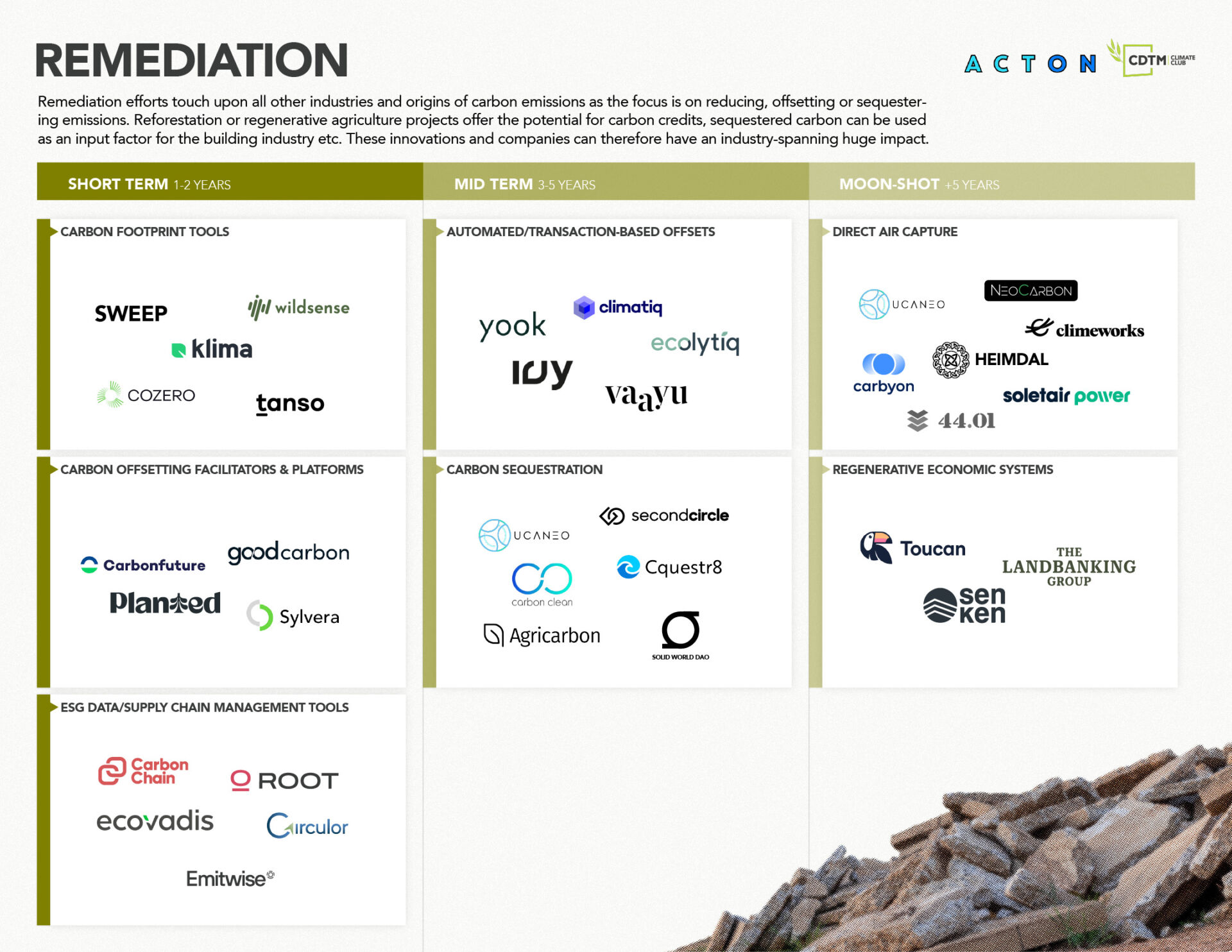
Remediation efforts touch upon all other industries and origins of carbon emissions, because the focus is on reducing, offsetting or sequestering emissions. For example, reforestation or regenerative agriculture projects offer the potential for carbon credits, sequestered carbon can be used in the building industry etc. These innovations and the companies pursuing them could therefore have an industry-spanning impact.
Our investment hypothesis is driven by:
1 Carbon data management tools
- Currently, the highest investment activity is in software solutions to capture, calculate and report carbon-related data
- A broad set of solutions exist that enable Scope 1 & 2 emission tracing and other regulatorily required data, trending towards more automation
- Importantly, there are increasingly more solutions for Scope 3 emission tracing of the whole supply chain
2 Automated offsets
- As emission data becomes more available, automated and mostly transaction-based carbon offsetting affects an increasing number of industries
- The initial spark of this trend has clearly been in e-commerce and retail, but it could also spread into heavy B2B industries
- With carbon offsetting being a valuable short-term solution, automated offsets will greatly increase potential impact until we are able to reduce emissions and sequester carbon more efficiently
3 Carbon sequestration and direct air capture
- Capturing emitted carbon at source and storing it (carbon sequestration) as well as direct air capture (DAC) can have a substantial impact in the years to come
- Carbon sequestration is still mainly in the development phase to ensure environmentally acceptable, safe, verifiable and economically viable solutions. Slowly, a number of projects are being launched to market
- Direct air capture is still in the large-scale and prototype phase, is not yet ready for full commercial deployment, and remains very costly. Nevertheless, investment inflow is increasing because DAC will play an important role in future decades
4 Regenerative economic systems
- In the hopefully not so distant future, new (market-based) incentive systems could help realign our economies
- Treating our natural resources as assets could lead to new “natural resources-backed” currencies that drive demand for carbon credits
- Internalising external effects could lead us to “truer” and more transparent prices



